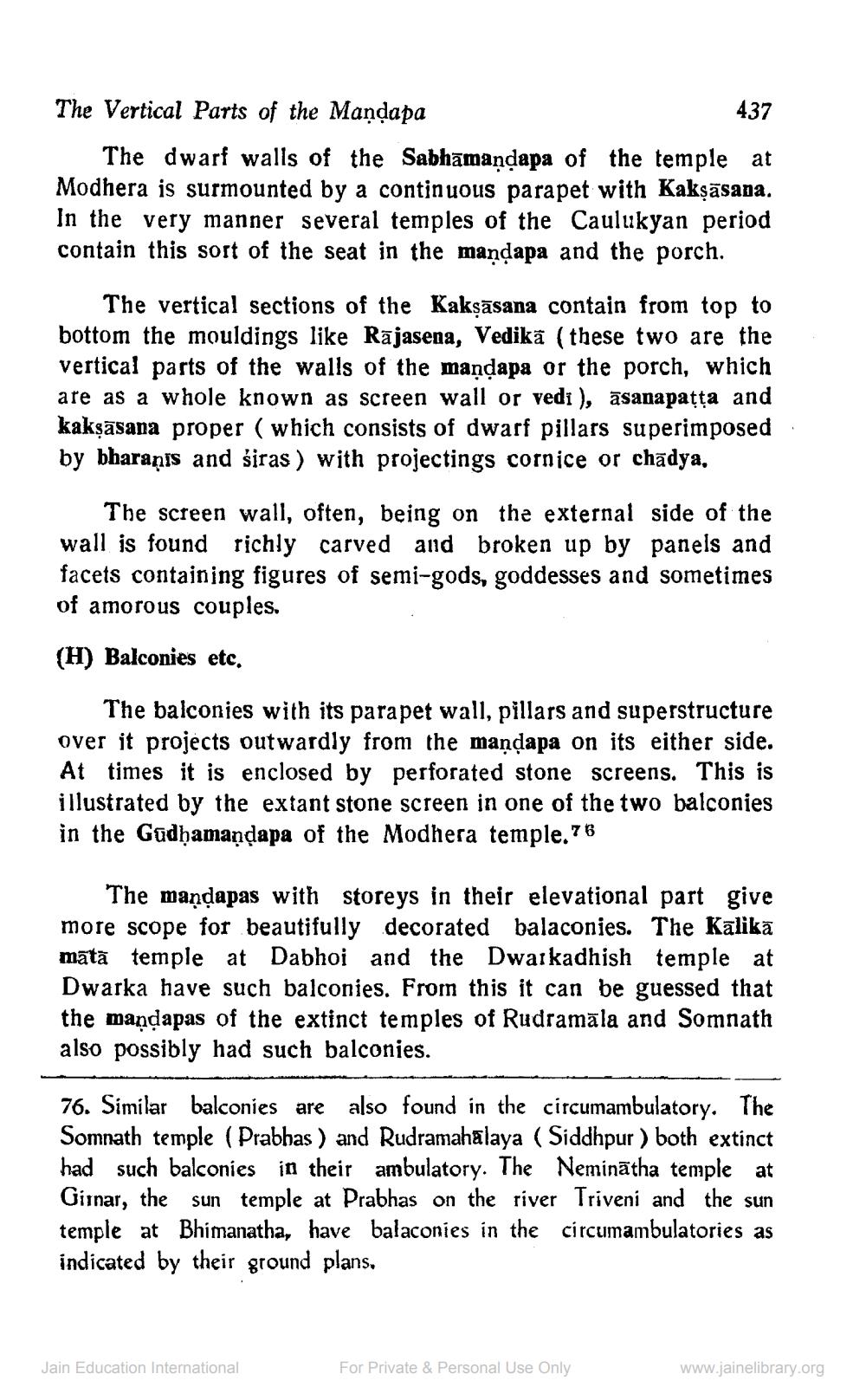________________
The Vertical Parts of the Mandapa
437 The dwarf walls of the Sabhāmaņdapa of the temple at Modhera is surmounted by a continuous parapet with Kaksāsana. In the very manner several temples of the Caulukyan period contain this sort of the seat in the mandapa and the porch.
The vertical sections of the Kaksāsana contain from top to bottom the mouldings like Rājasena, Vedikā (these two are the vertical parts of the walls of the maņdapa or the porch, which are as a whole known as screen wall or vedi ), asanapatta and kakşāsana proper ( which consists of dwarf pillars superimposed by bharaṇis and ģiras ) with projectings cornice or chādya,
The screen wall, often, being on the external side of the wall is found richly carved and broken up by panels and facets containing figures of semi-gods, goddesses and sometimes of amorous couples.
(H) Balconies etc.
The balconies with its para pet wall, pillars and superstructure over it projects outwardly from the manqapa on its either side. At times it is enclosed by perforated stone screens. This is illustrated by the extant stone screen in one of the two balconies in the Gadhamandapa of the Modhera temple. 76
The maņdapas with storeys in their elevational part give more scope for beautifully decorated balaconies. The Kālikā matā temple at Dabhoi and the Dwarkadhish temple at Dwarka have such balconies. From this it can be guessed that the maņdapas of the extinct temples of Rudramāla and Somnath also possibly had such balconies.
76. Similar balconies are also found in the circumambulatory. The Somnath temple (Prabhas ) and Rudramahalaya ( Siddhpur ) both extinct had such balconies in their ambulatory. The Neminātha temple at Girnar, the sun temple at Prabhas on the river Triveni and the sun temple at Bhimanatha, have balaconies in the circumambulatories as indicated by their ground plans.
Jain Education International
For Private & Personal Use Only
www.jainelibrary.org




